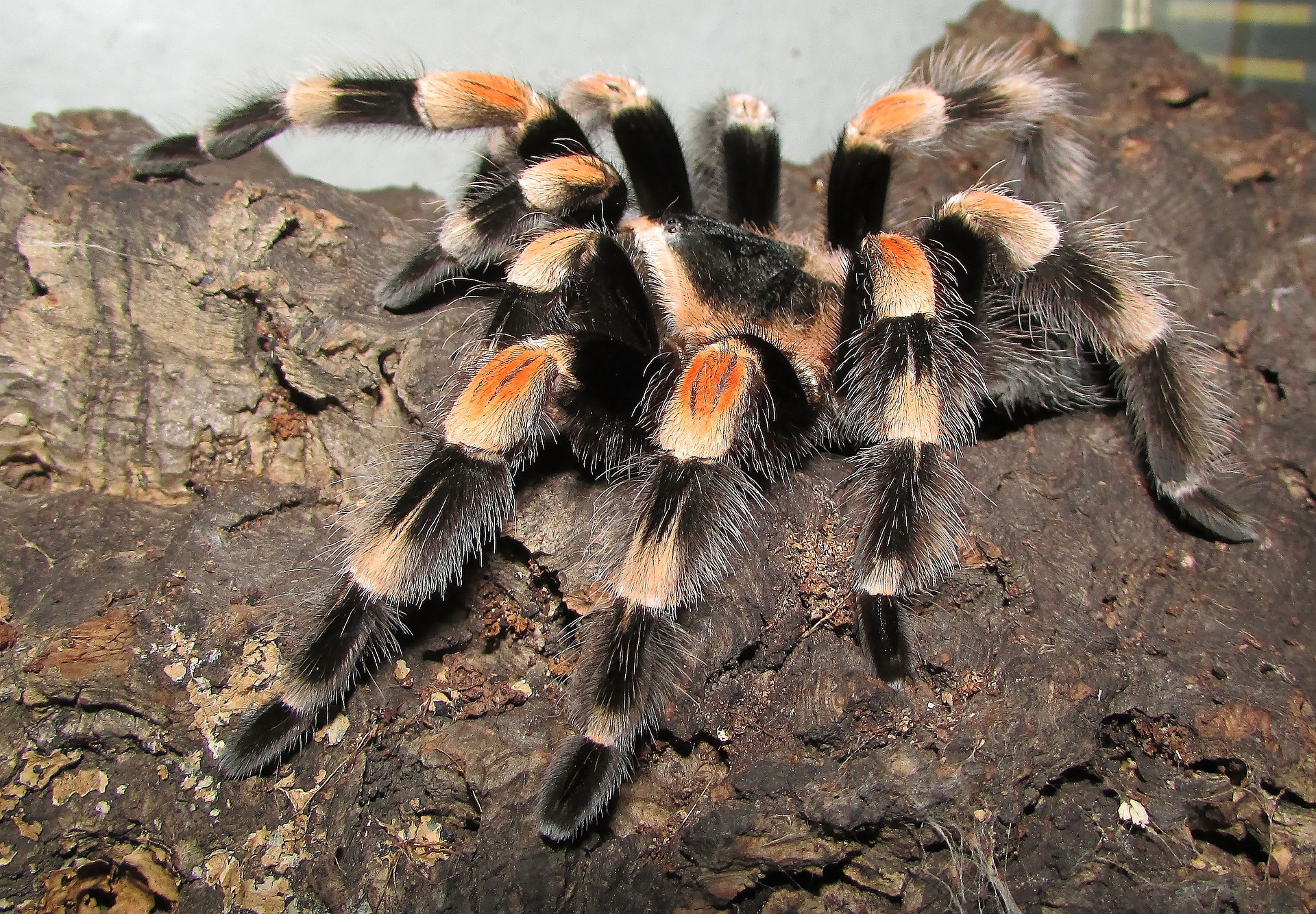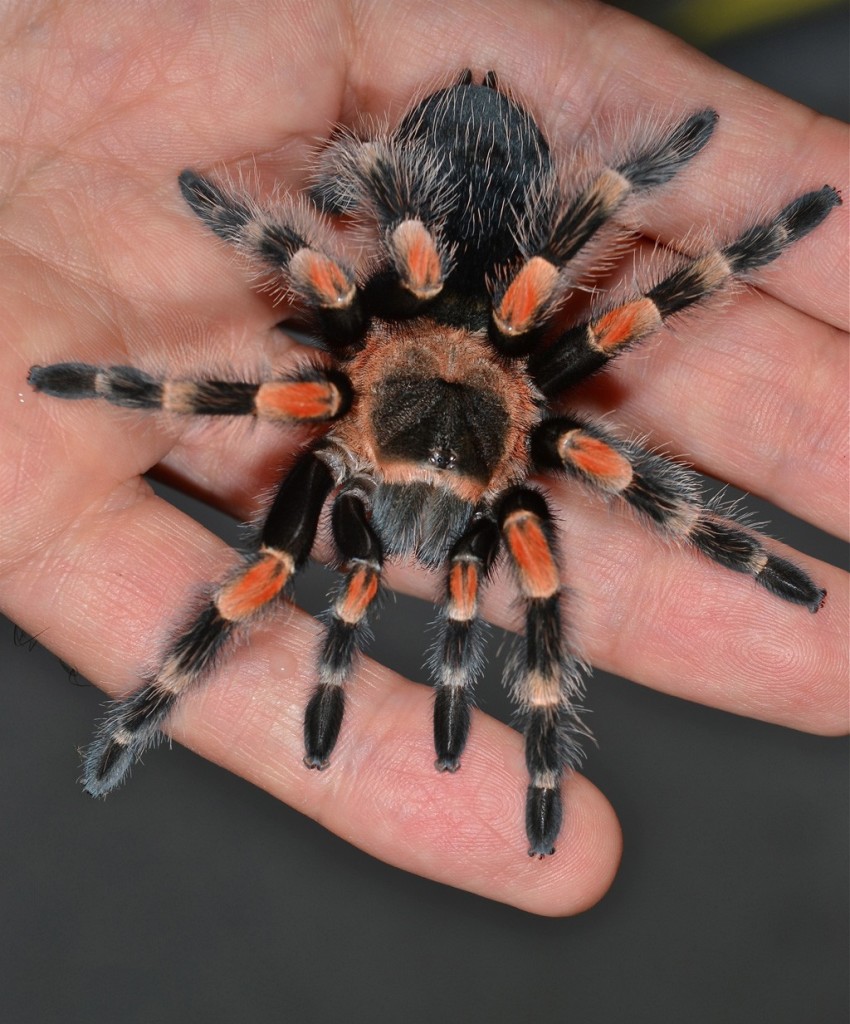Brachypelma Smithi

How to care for a Brachypelma Smithi
 Perhaps one of the most well-known tarantulas for every beginner hobbyist is the Brachypelma Smithi otherwise also known as the Mexican Red Knee Tarantula. This is for good reason too, the very vibrant colors on their bodies contrasting with a very dark color make them easily distinguishable from the rest. These highly coveted tarantulas, like their name suggest have “red knees”. Originating from the Pacific coast of Mexico, the Brachypelma Smithi is used to residing in drier areas with little to no vegetation. However, these species of tarantulas were so popular amongst the Chinese that in 1985, they were listed in CITES due to the large decrease in size of the wild-caught specimens for the sole purpose of exportation to the Chinese market. Nevertheless, the Brachypelma Smithi is still widely bred in captivity, so obtaining one shouldn’t be an issue. The lifespans for these tarantulas (females) are upwards of an astounding 30 years! While their male counterparts typically only live to about 10 years. It’s no wonder these are sometimes considered heirloom pets. These species of tarantulas are docile, hardy and colorful. For this reason, they are very popular amongst beginners. However, a problem associated with the Brachypelma Smithi is the fact that they are notorious for “flicking hairs” off their abdomen. This is one of their first lines of defense before resorting to a fight (bite) or flight. This results in a bald abdomen if used often, so don’t disturb it! However, like all things the hairs will be replaced with new ones after molting. If humans come in contact with these “urticating hair” this usually results in a rash but it is nothing to be alarmed of. The recommended temperatures for captivity is around 75 – 80 degrees F. Humidity for this species should be kept around 50 – 60% to maintain a happy tarantula. If you notice your Brachypelma Smithi cocooning in a corner of the terrarium, it is probably too humid. Substrate for these tarantulas ideally have to be at least half the height of the terrarium. This allows for sufficient space when your tarantula is burrowing. Furthermore, this ensures that falls are not as severe. When deciding the size of the terrarium, a good guideline to follow is basing it off the size of the tarantulas leg span. In general, 3 times the length of the legs for the width of the terrarium and 2 times the length of their legs for the height of the terrarium is ideal.
Perhaps one of the most well-known tarantulas for every beginner hobbyist is the Brachypelma Smithi otherwise also known as the Mexican Red Knee Tarantula. This is for good reason too, the very vibrant colors on their bodies contrasting with a very dark color make them easily distinguishable from the rest. These highly coveted tarantulas, like their name suggest have “red knees”. Originating from the Pacific coast of Mexico, the Brachypelma Smithi is used to residing in drier areas with little to no vegetation. However, these species of tarantulas were so popular amongst the Chinese that in 1985, they were listed in CITES due to the large decrease in size of the wild-caught specimens for the sole purpose of exportation to the Chinese market. Nevertheless, the Brachypelma Smithi is still widely bred in captivity, so obtaining one shouldn’t be an issue. The lifespans for these tarantulas (females) are upwards of an astounding 30 years! While their male counterparts typically only live to about 10 years. It’s no wonder these are sometimes considered heirloom pets. These species of tarantulas are docile, hardy and colorful. For this reason, they are very popular amongst beginners. However, a problem associated with the Brachypelma Smithi is the fact that they are notorious for “flicking hairs” off their abdomen. This is one of their first lines of defense before resorting to a fight (bite) or flight. This results in a bald abdomen if used often, so don’t disturb it! However, like all things the hairs will be replaced with new ones after molting. If humans come in contact with these “urticating hair” this usually results in a rash but it is nothing to be alarmed of. The recommended temperatures for captivity is around 75 – 80 degrees F. Humidity for this species should be kept around 50 – 60% to maintain a happy tarantula. If you notice your Brachypelma Smithi cocooning in a corner of the terrarium, it is probably too humid. Substrate for these tarantulas ideally have to be at least half the height of the terrarium. This allows for sufficient space when your tarantula is burrowing. Furthermore, this ensures that falls are not as severe. When deciding the size of the terrarium, a good guideline to follow is basing it off the size of the tarantulas leg span. In general, 3 times the length of the legs for the width of the terrarium and 2 times the length of their legs for the height of the terrarium is ideal.
Brachypelma Smithi care sheet
| Difficulty: | Beginner |
| Type: | Non-Arboreal (Land Dwelling) |
| Food: | Spiderlings will eat crickets, and smaller insects (insect must be at most 3/4 of the spiderlings size). Adults will eat crickets, insects as large as themselves, pinky mouse, lizards even a fuzzy mice! |
| Maximum Size: | 4.5- 5.5 inches |
| Growth Rate: | Slow |
| Temperament: | Docile and Calm |
| Lifespans: | Males: (around 10 years) Females: (25 – 30 years) |
Check out this Brachypelma Smithi in Action


[Help Spread the word if this helped you, Sharing is caring]


